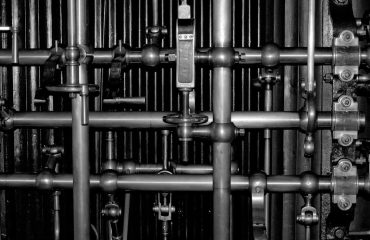Equal angle bars, also known as angle irons or simply angles, are versatile structural components found in countless applications across various industries. Their simple yet robust design, characterized by two equal legs meeting at a right angle, makes them incredibly useful for a wide range of projects. This comprehensive guide delves into the multifaceted world of equal angle bars, exploring their uses, manufacturing, material selection, and considerations for optimal application.
Understanding the Geometry and Manufacturing of Equal Angle Bars
Equal angle bars are defined by their leg length – both legs are of equal length, unlike unequal angle bars. This symmetry contributes to their strength and simplifies design calculations. They are typically manufactured from various materials, most commonly mild steel, but also stainless steel, aluminum, and other alloys depending on the specific application requirements. The manufacturing process typically involves hot rolling, where steel billets are passed through rollers to achieve the desired shape and dimensions. Precision is crucial in this process to ensure dimensional accuracy and consistent quality. After rolling, the bars may undergo further processing, such as cutting to length, surface treatment (e.g., galvanizing for corrosion resistance), and precision machining for specific applications requiring tighter tolerances.
Diverse Applications of Equal Angle Bars in Construction and Fabrication
The construction and fabrication industries are significant consumers of equal angle bars. Their strength and ability to form rigid structures make them ideal for various applications. They are commonly used as:
- Structural supports: In buildings and bridges, angles provide support for beams, columns, and other structural elements.
- Framing members: They are frequently used in the fabrication of steel frameworks for buildings, sheds, and other structures.
- Reinforcement: Angles can reinforce weaker sections of structures or provide additional support in critical areas.
- Bracing: They are effective in bracing structures against lateral loads, preventing instability.
- Connection elements: Angles are used to connect different structural members, providing a strong and reliable joint.
Beyond construction, equal angle bars find applications in the manufacturing of machinery, automotive parts, furniture, and various other products.
Material Selection: Choosing the Right Equal Angle Bar for Your Project
The choice of material for equal angle bars significantly impacts their performance and lifespan. The most common material is mild steel, offering a good balance of strength, ductility, and cost-effectiveness. However, for applications requiring higher corrosion resistance, stainless steel is preferred. Aluminum angles are lighter and offer excellent corrosion resistance, making them suitable for applications where weight reduction is a priority. Other materials, such as galvanized steel (providing enhanced corrosion protection), and high-strength low-alloy steels (offering superior strength) may be used depending on the specific requirements of the project.
Advantages and Disadvantages of Using Equal Angle Bars
Advantages:
- High strength-to-weight ratio: Equal angle bars offer excellent strength relative to their weight, making them efficient structural components.
- Versatility: Their simple design allows for easy fabrication and integration into various structures.
- Cost-effectiveness: Generally, equal angle bars are relatively inexpensive compared to other structural components.
- Easy to weld and fabricate: They readily lend themselves to welding and other fabrication processes.
- Widely available: Equal angle bars are readily available in various sizes and materials from steel suppliers.
Disadvantages:
- Susceptibility to corrosion (for mild steel): Mild steel angles require protection against corrosion, often through galvanizing or painting.
- Potential for warping during welding: Care must be taken during welding to prevent warping or distortion.
- Limited aesthetic appeal: Their simple design may not be suitable for applications requiring a more refined aesthetic.
Selecting the Right Size and Grade of Equal Angle Bar: A Practical Guide
Selecting the appropriate size and grade of equal angle bar requires careful consideration of several factors, including the intended load, the type of structure, and environmental conditions. The size is determined by the leg length, thickness, and overall dimensions. The grade refers to the material’s strength and other properties. Structural engineers typically perform calculations to determine the appropriate size and grade based on load requirements and relevant building codes. Factors such as the length of the bar, the method of connection, and the anticipated stresses also play a crucial role in the selection process. Consulting with a structural engineer is recommended for complex projects to ensure the selection of suitable equal angle bars that meet safety and performance standards.
In conclusion, equal angle bars are indispensable components in numerous construction and fabrication applications. Understanding their properties, manufacturing processes, and selection criteria is essential for engineers, fabricators, and anyone involved in projects utilizing these versatile structural elements. By carefully considering the factors discussed above, you can ensure the selection of the right equal angle bar for your specific needs, leading to a safe, efficient, and cost-effective project.
Tags: equal angle bar, angle iron, steel angle, structural steel, construction materials




